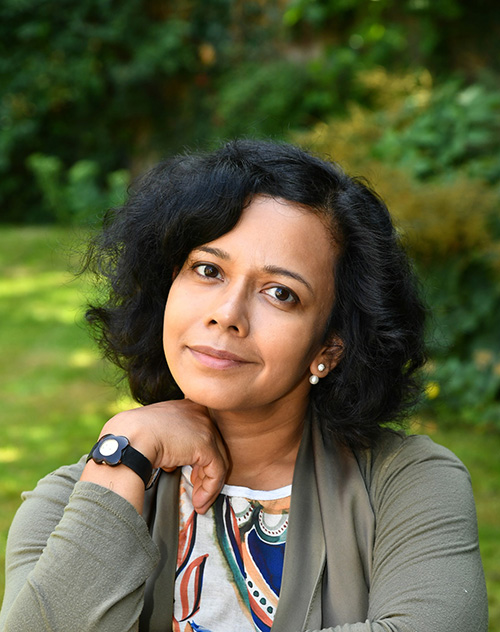Women’s History Month: Professor Nandini Das
Autumn 1617. As the ambassador of a small nation stood in attendance in the huge public audience hall of one of the wealthiest empires of the world, he suspected that he was being watched. An intricate lattice separated the public, male-dominated world of the court from the private, domestic world of the women, but the ambassador thought he could see dark eyes trained on him through the gaps, and the occasional flash of the rarest jewels. They belonged to the ‘two principal wives’ of the emperor whose attention he was hoping to attract. ‘When I looked up,’ the ambassador wrote that evening in his daily journal, ‘they retired, and were so merry that I supposed they laughed at me.’
As I worked on the history of the first English embassy to India, the presence of women in the documents of the period were frequently as elusive as Sir Thomas Roe’s first glimpse of the one of the most powerful political forces in early seventeenth century South Asia – Mihr-un-Nisa, later renamed Noor Mahal, and by this time crowned as Nur Jahan, co-sovereign of the great Mughal empire with her husband, the emperor Jahangir. When Roe arrived in India, his embassy was at the forefront of England’s belated attempt to gain a toehold in a global trading network dominated by the Islamic empires of the Ottomans and the Mughals. And while Roe’s embassy appears occasionally in the pre-histories of the behemoths that the East India Company and the British Empire in India were to become in centuries that followed, the role of women within it could easily be missed.
The histories of exploration, exploitation, trade, colonisation and empire etch out a field dominated by men, yet the reality is that women were by no means immune to the effects of such developments, and occasionally – like Nur Jahan – even managed to determine their course.
Yet to foreground women whose access to certain forms of privilege also offered them an access to power that lay beyond the reach of millions is not enough either. The history of this crucial moment of cross-cultural encounter between two nations, and indeed the history of this period in general, is full of fragments of lives that rarely find space in our received historiography – they are often deemed too fleeting, too minor, too insubstantial to claim a space. Race and class, as well as gender, have always determined both the traces one has been allowed to leave, as well as the traces that have been considered worth preserving. Scholars now are increasingly reminding us, however, that neither the archives, nor the methodologies that we recognised as established ways of interrogating the past, are neutral entities. Recovering those presences nearly lost – the shadowy figures of the other nameless women who were perhaps present behind the Mughal empress as she observed the English ambassador – demands new modes of historiography, and new ways of interrogating the past. It is a task without which our understanding of history will remain incomplete.
Nandini Das’ debut book Courting India: England, Mughal India and the Origins of Empire is out now and available to purchase here.

